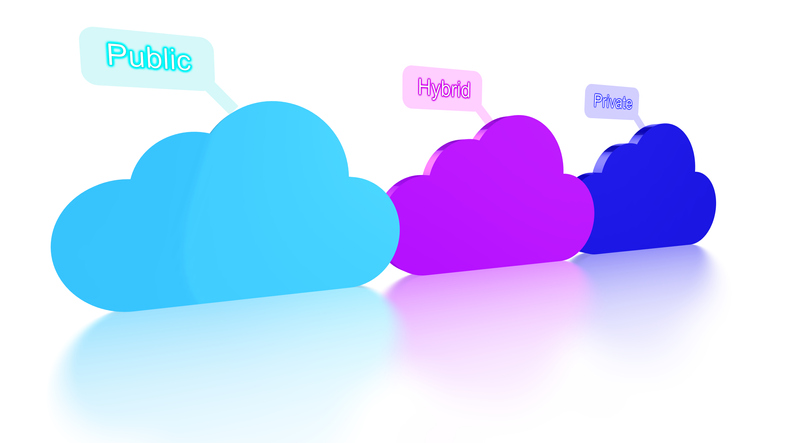
Insight by Red Hat
Hybrid cloud: The key to surviving and thriving during the pandemic
The coronavirus pandemic has put an accelerator on hybrid cloud adoption within both the federal and state governments.

This content is provided by Red Hat.
The coronavirus pandemic has put an accelerator on hybrid cloud adoption within both the federal and state governments. With the vast majority of government employees suddenly working from home in such a short period of time, business processes, workloads and servers have all had to be stretched and dispersed. Agencies that already had a hybrid cloud strategy were in a good place to adapt to this new paradigm. And if you didn’t have a hybrid cloud before this, you do now.
But some hybrid cloud strategies are less comprehensive than others. The best include integration between services and applications to accelerate innovation. But those are few and far between.
“What we found most was as soon as the pandemic hit certain resources, certain applications were stretched thin while others have been sitting idle. And we certainly didn’t anticipate which services were going to need to scale prior to the pandemic,” said Dan Domkowski, senior principal technology evangelist at Red Hat. “For instance, we didn’t know that all of a sudden, within a few weeks’ time, entire agencies were going to have to prepare for an entire workforce that was going to be remote.”
The newly massive remote workforce required scaling networking infrastructure with virtual private networks and automated configuration of multi-protocol label switching tunnels in routing devices, among other adjustments. Ways to automate and be versatile became crucial. Agencies had no choice but to scale quickly, automate repeatable tasks and even increase the use of services offered on demand in the public cloud
“Many may have done a great job at solving these in the near term. But developing a way in which that’s going to last them through the rest of the year and onward is what’s going to come next,” Domkowski said.
One major example of this is unemployment applications within certain states, like New York State. They had to scale up via the cloud in order to handle the suddenly increased workload and still be able to provide unemployment services. “The public cloud provides fast access to resources for delivery, but even components hosted in the cloud have dependencies located elsewhere. It’s the integration of the those dependencies, how they are delivered, scaled, monitored, and secured together as a holistic digital system is what makes up a sound hybrid cloud strategy.”
But hybrid cloud is helping agencies who weren’t as well positioned to handle this new work paradigm play catch-up. Experts have found that teams can innovate the most when they have control over their own tools. That’s a key reason for implementing hybrid cloud in and of itself. Different providers have different strengths and weaknesses around what tools they provide and workloads they handle.
So if one team decides they should be working with AWS, while another picks Azure, a hybrid cloud strategy helps both teams get the most out of those assets while allowing the agency to set certain controls and standards. It provides ways to say which tools and libraries are approved, and standards like application programming interfaces (APIs) and immutable infrastructure so that services can be discoverable, authenticated, and even portable. Agencies just need to be sure the environment is secure and manageable, and to institute rules and controls.
And that’s important, because so many security controls and requirements are built around the assumption that even physical security is applicable to all employees. But now employees are mostly sitting in environments that can’t be controlled by their employers. Connecting to critical business services and data is a worry for every enterprise, and that worry just got amplified as remote workforces exploded. Figuring out a way to adapt their security policies to this new world is critical for agencies to figure out. Enforcing things like two-factor authentication, VPNs, and approved/updated tooling and libraries can help, but agencies also have to be careful not to hinder innovation.
“So finding that balance of allowing teams to innovate, giving them a chance to pick their path toward a desired outcome, while also providing guidelines or the lanes in the road is critical for delivering digital transformation in government,” Domkowski said. “Consumable and secure don’t need to be mutually exclusive.”
Agencies also need the flexibility to migrate and integrate applications, data and other resources from one environment to another if need be. The best outcome or tool for 2020 might not be the best for 2022, and agencies don’t want to trade one set of lock-in vendors for another. Instead, they should prioritize being flexible, being portable, and following standards like creating and managing APIs and deploying on immutable infrastructure . Generally, technologies that have communities built around them tend to exist for a long time, which can help guide future movement, as well as encourage flexibility.
Hybrid cloud is also critical to understanding and developing these applications in order to get insights that allow agencies to build automation. Because applications can integrate without human interaction, they can learn from one another, which allows them to get to a result faster and accelerates both an organization and its performance.
“The only thing that’s certain is uncertainty. So, act as if uncertainty is always going to be our normal,” Domkowski said. “And if you do that, you’ll prepare your systems and your services to be portable, to be flexible, and to get the most out of them, no matter what gets thrown at us next.”
Copyright © 2024 Federal News Network. All rights reserved. This website is not intended for users located within the European Economic Area.
Related Stories




